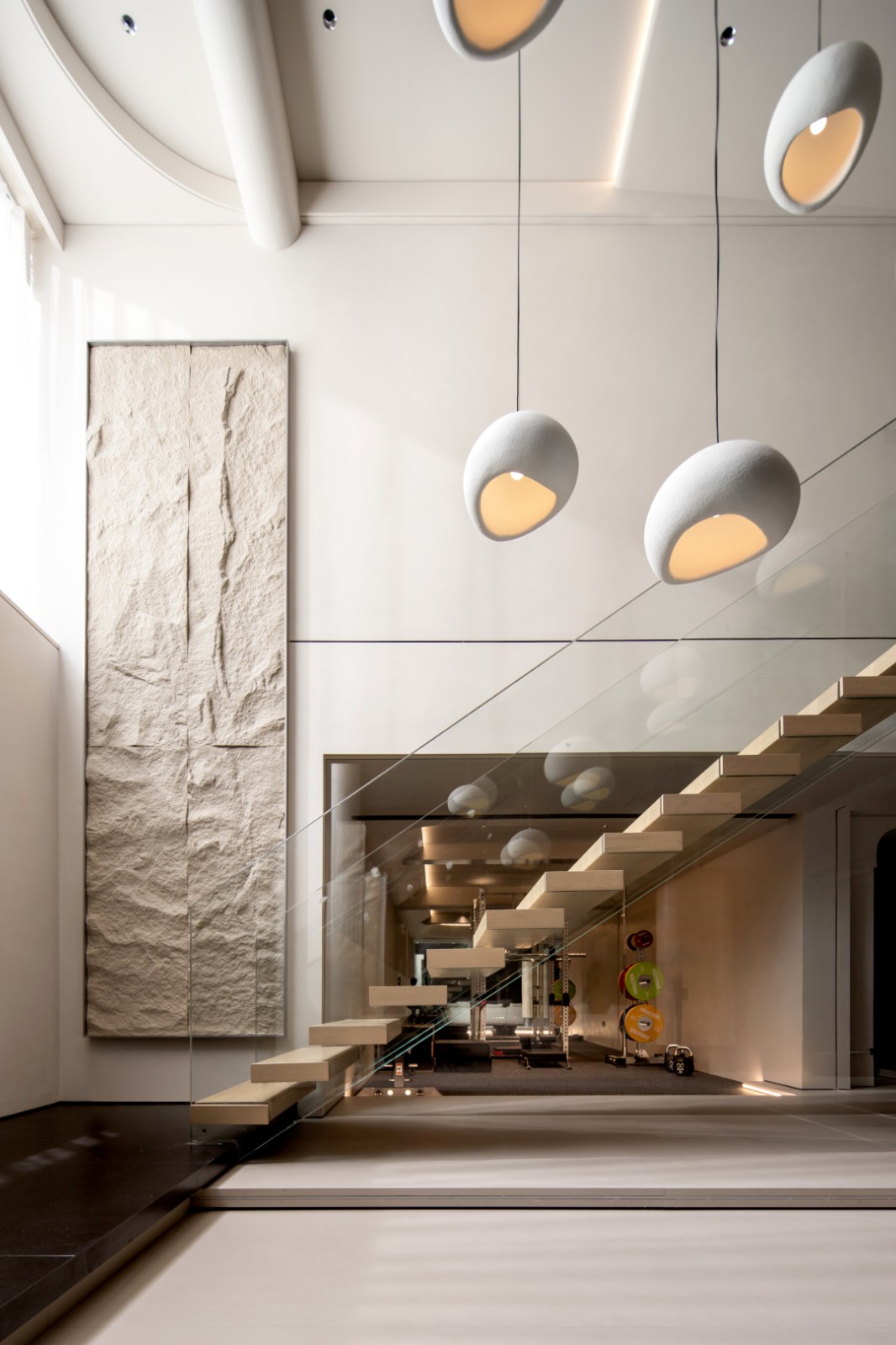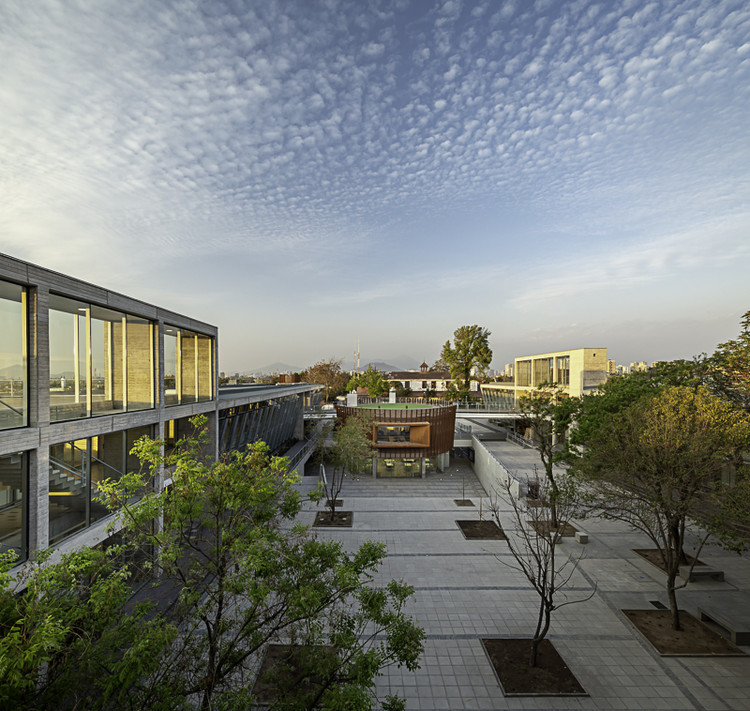AD Classics Rothko Chapel Philip Johnson, Howard Barnstone, Eugene Aubry
2011-09-14 00:00
架构师提供的文本描述。1964年,马克·罗斯科(MarkRothko)被约翰和多米尼克·德梅尼尔(他们也是附近的Menil藏品的创始人之一)委托,该收藏位于伦佐钢琴设计的梅尼尔博物馆(Menil Museum)和西西·托姆布里画廊(Cy Twom有声画廊)。最初被指派与罗斯科一起工作的建筑师是菲利普·约翰逊,罗斯科与他就他们对这座建筑的独特想法发生了冲突。Rothko会反对约翰逊计划的巨大意义,因为它分散了对房子的艺术品的注意力。由于这个原因,教堂将经过几次修改和建筑师的冥想空间的工作。罗斯科先是和霍华德·巴恩斯通(HowardBarnstone),然后是尤金·奥布里(Eugene Aubry),但最终没能活到1971年教堂竣工。在与抑郁症作了长期斗争之后,罗斯科于1970年2月25日在他的纽约工作室自杀。
Text description provided by the architects. In 1964 Mark Rothko was commissioned by John and Dominique de Menil (who are also founders of the nearby Menil Collection that is housed in the Renzo Piano-designed Menil Museum and Cy Twombly Gallery) to create a meditative space filled with his site-specific paintings. The original architect assigned to work alongside Rothko was Philip Johnson, with whom Rothko clashed over their distinct ideas for the building. Rothko would object to the monumentality of Johnson’s plan as distracting from the artwork it was to house. For this reason the Chapel would go through several revisions and architects working on the meditative space. Rothko continued first with Howard Barnstone and then Eugene Aubry, but ultimately did not live to see the chapel’s completion in 1971. It was after a long struggle with depression that Rothko committed suicide in his New York Studio on February 25th, 1970.
是约翰和多米尼克德梅尼尔,休斯顿慈善家谁推广现代艺术,委托罗斯科创造一系列超越和冥想形式的艺术,将被安置在一个非教派的礼拜场所,也是由建筑师菲利普约翰逊的帮助下设计的。
It was John and Dominique de Menil, Houston philanthropists who promoted modern art that commissioned Rothko to create a series of transcendental and meditative forms of art that were to be housed in a non-denominational place of worship also designed by Rothko with the help of architect Philip Johnson.
新的罗斯科礼拜堂将位于毗邻梅尼尔收藏和圣托马斯大学,在休斯顿得克萨斯州的20世纪20年代平房风格的社区。
The new Rothko Chapel would be located adjacent to the Menil Collection and the University of St. Thomas with a 1920s bungalow style neighborhood in Houston Texas.
在罗斯科和约翰逊之间发生冲突后,建筑师的职责移交给了霍华德·巴恩斯通(HowardBarnstone),他是德克萨斯州约翰逊大楼的监督建筑师。巴恩斯通和他的搭档尤金奥布里根据罗斯科的意愿开发了这个设计。1970年Rothko去世后,Barnstone因病离开了这个项目,Aubry要求Johnson在完成设计时担任顾问。
After the confliction between Rothko and Johnson, the duties of architect were turned over to Howard Barnstone, the supervising architect on this and other Johnson buildings in Texas. Barnstone and his partner Eugene Aubry developed the design in accordance with Rothko’s wishes. After Rothko’s death in 1970, Barnstone left the project because of illness, and Aubry asked Johnson to act as a consultant in completing the design.
“我一直认为,一件艺术品必须在自己的媒介范围内完全可行。例如,一段音乐必须通过它自己的音乐结构来满足和刺激,而不是仅仅针对它可能设置的任何单词或它可能引用的任何额外的音乐节目来产生它的效果。同样,一件视觉艺术作品必须通过暗示性的标题或嵌入的文本,而是通过自己的意象来吸引眼睛和想象,而必须与观众的心灵和灵魂对话。一件艺术品最终必须是一件本身的东西,而不仅仅是它周围世界事物的代表“。
“I have long believed that a piece of art must be wholly viable within the bounds of its own medium. For example, a piece of music must satisfy and stimulate by means of its own musical structure and not produce its effects simply in relation to whatever words it may set or whatever extra musical program it may reference. Similarly, a work of visual art must speak to the mind and indeed the soul of the viewer not through suggestive titles or embedded texts, but by engaging the eye and the imagination through its own imagery. A work of art must ultimately be a thing in and of itself and not simply a representation of something from the world around it”.
-Christopher Rothko, Mark Rothko's Son
通过罗斯科的作品,他希望把感性的即时性与精神的内涵结合起来。正如罗斯科在完成教堂绘画时所说的,“我想同时画有限的和无限的。”
Through the work of Rothko he wanted to combine perceptual immediacy with spiritual import. As Rothko said upon completing the Chapel paintings, “I wanted to paint both the finite and the infinite.”
对于罗斯科来说,礼拜堂将是一个目的地,一次远离艺术中心的朝圣之旅,纽约,寻找罗斯科的新精神艺术作品的人可以在那里旅行。教堂将消耗罗斯科六年的生命,逐渐将他和他的艺术转变为对超越可能性的探索和奉献。
For Rothko, the Chapel was to be a destination, a pilgrimage far from the center of art, New York, where seekers of Rothko’s newly spiritual artwork could journey. The Chapel would consume six years of Rothko’s life, gradually transforming him and his art into an exploration and devotion for the possibility of transcendence.
见证罗斯科在礼拜堂的工作就是让自己接受一种精神体验,通过它对主题的超越,使我们更接近意识本身。它允许我们接近经验的极限,唤醒一个人对我们存在的觉知。正是通过对十四幅大画的超越性水平,它们的黑色、几乎不可穿透的表面代表了沉思和需要找到的空虚,在那里人们才能真正地探索被搜索的问题的更大意义。
To witness the work of Rothko with the Chapel is to submit one’s self to a spiritual experience, which, through its transcendence of subject matter, brings us closer to consciousness itself. It allows us to approach the limits of experience and awakens one to the awareness of our existence. It is through the level of transcendence of the fourteen large paintings whose dark, nearly impenetrable surfaces represents contemplation and the void needed to be found where one can truly explore a greater meaning to the questions being searched.
教堂的绘画包括中央墙上一幅棕色的单色三联画(三个5英尺长15英尺的壁板),左边和右边的一对三角画是由不透明的黑色长方形组成的。三幅画之间有四幅单独的画(每幅画11英尺,15英尺),另外一幅画正对着对面墙壁的中央三幅画。其效果是用巨大的、令人印象深刻的黑暗景象包围着观众。
The Chapel paintings consist of a monochrome triptych in soft brown on the central wall (three 5-by-15-foot panels), and a pair of triptychs on the left and right made of opaque black rectangles. Between the triptychs are four individual paintings (11 by 15 feet each), and one additional individual painting faces the central triptych from the opposite wall. The effect is to surround the viewer with massive, imposing visions of darkness.
为了符合罗斯科的意愿,教堂是一座简单的砖墙外墙、平屋顶、一层楼的建筑,与约翰逊最初设计的白色灰泥混凝土砌块建筑完全不同。活生生的橡树环绕教堂,坐落在一个倒影池和Cor-十钢雕塑破碎的Obelisk。这座建筑的平面不规则八角形,四堵更宽的主墙与四面二墙交替,还有一层长方形的尖顶和凹进的地板,还有一个遮挡的天窗。罗斯科仔细地配置了他的七幅黑色画布和七幅梅花色的画布;北面、东面和西面的墙上各有一幅画,南面的墙上有一幅画,对角线的墙上各有一幅画。
In keeping with Rothko’s wishes, the Chapel is a simple brick-exterior, flat-roofed, one-story building, entirely different from Johnson’s original idea for a white stucco, concrete block building monumentally topped by a pyramid. Live oak trees surround the Chapel, located next to a reflecting pool and the Cor-Ten steel sculpture Broken Obelisk. The building is irregularly octagonal in plan, with four wider principal walls alternating with four secondary walls, and with a rectangular apse and recessed floor and a baffled skylight. Rothko carefully configured his seven black canvases and seven plum-colored canvases; there is a triptych of paintings on each of the north, east, and west walls, one painting on the south wall, and one painting on each of the diagonal walls.
教堂不仅作为现代主义建筑的作品,而且因为罗斯科的绘画,作为现代艺术的作品,作为捕捉罗斯科生活的斗争的手段而具有重要意义。因此,教堂模糊了建筑、艺术和经常困扰生活的混乱之间的界限,在美学、效果和超越人类经验的能力方面挑战了这种区别。
The Chapel is significant not only as a work of modernist architecture but also, because of Rothko’s paintings, as a work of modern art and as a means to capture the struggle with which Rothko lived his life. As such, the Chapel blurs the line between architecture, art, and the turmoil that often haunts life, challenging this distinction in both its aesthetic, effect and the ability to transcend the human experience.
 举报
举报
别默默的看了,快登录帮我评论一下吧!:)
注册
登录
更多评论
相关文章
-

描边风设计中,最容易犯的8种问题分析
2018年走过了四分之一,LOGO设计趋势也清晰了LOGO设计
-

描边风设计中,最容易犯的8种问题分析
2018年走过了四分之一,LOGO设计趋势也清晰了LOGO设计
-

描边风设计中,最容易犯的8种问题分析
2018年走过了四分之一,LOGO设计趋势也清晰了LOGO设计





































































































































